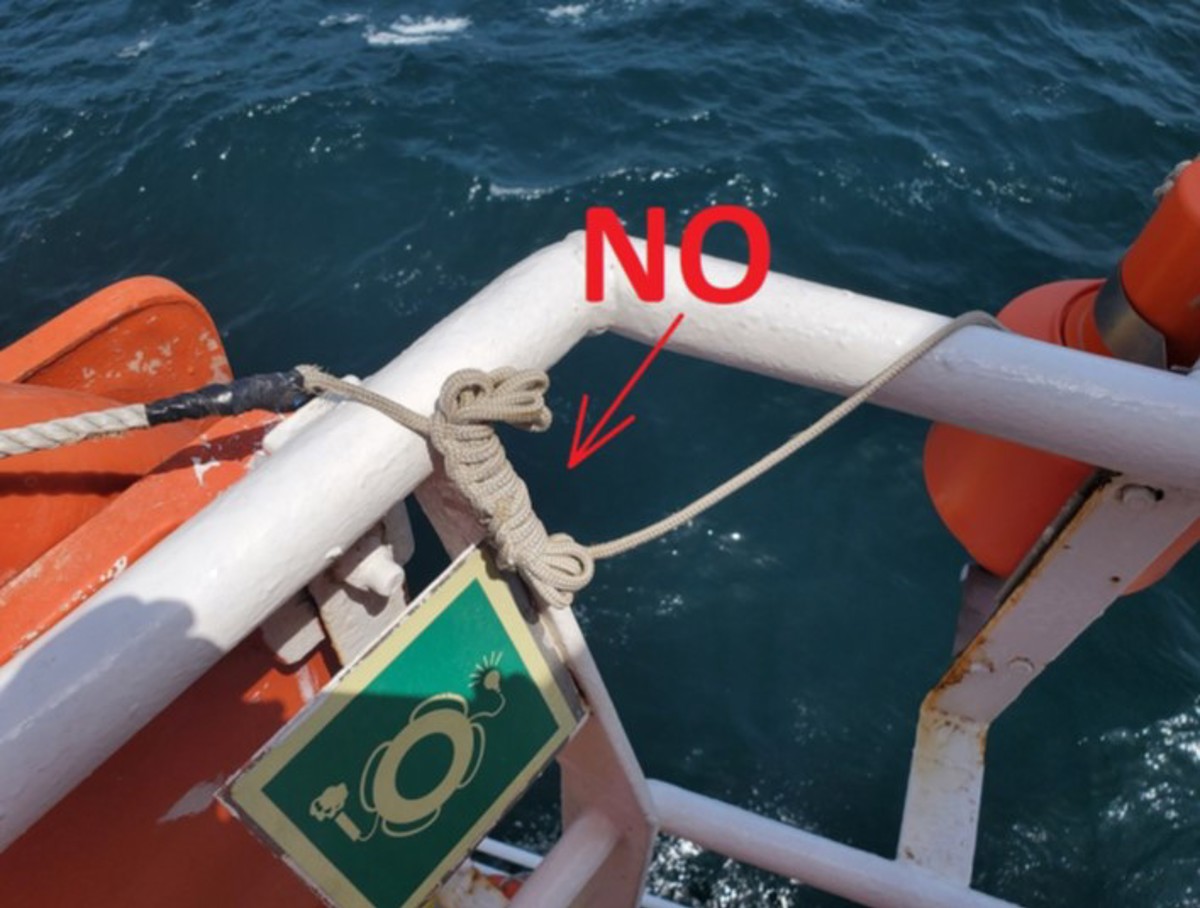Shortened lanyard on MOB beacon
- Safety Flash
- Published on 15 October 2021
- Generated on 15 December 2025
- IMCA SF 28/21
- 1 minute read
Jump to:
The practice of shortening the lanyards on MOB beacons was discovered by someone visiting a vessel. This was accordingly communicated to the Chief Mate to be fixed.
What happened?
If the lanyard is shortened, the MOB beacon may fail to activate, or, if it were activated, the person who fell overboard may find themselves in the potentially hazardous situation of being too close to the heavily smoking MOB beacon while handling the life buoy.
What went wrong?
- There was a lack of understanding of how these life buoys operate, as well as failure to perceive relevant hazards.
- There was improper/incomplete inspection of life-saving appliances (LSAs) onboard.
Actions
- Check length of similar lanyards attached to MOB beacons; the correct length will be prescribed in the manufacturer’s manual.
- It should be long enough to allow the life buoy to gain a good inertia after being thrown, before releasing the MOB beacon from its cradle.
- It should be long enough to allow the life buoy to gain a good inertia after being thrown, before releasing the MOB beacon from its cradle.
- Include check of MOB beacon in planned maintenance schedule.
IMCA Safety Flashes summarise key safety matters and incidents, allowing lessons to be more easily learnt for the benefit of the entire offshore industry.
The effectiveness of the IMCA Safety Flash system depends on the industry sharing information and so avoiding repeat incidents. Incidents are classified according to IOGP's Life Saving Rules.
All information is anonymised or sanitised, as appropriate, and warnings for graphic content included where possible.
IMCA makes every effort to ensure both the accuracy and reliability of the information shared, but is not be liable for any guidance and/or recommendation and/or statement herein contained.
The information contained in this document does not fulfil or replace any individual's or Member's legal, regulatory or other duties or obligations in respect of their operations. Individuals and Members remain solely responsible for the safe, lawful and proper conduct of their operations.
Share your safety incidents with IMCA online. Sign-up to receive Safety Flashes straight to your email.
